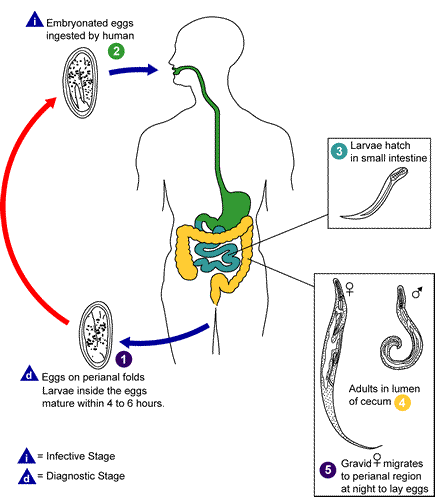tangan:Enterobius vermicularis LifeCycle.gif
Enterobius_vermicularis_LifeCycle.gif (435 × 497 syangsu, hacica ku tabaki nu tangan: 17 KB, MIME kakuniza: image/gif)
tangan nu nazipa’an
sapecec ku demiad/tuki sapiciwsace ku tuki nina demiad a tangan baziyong
| demiad/tuki | sukep tu zunga | ditek | misaungayay | pacunus sakacaay kapawan | |
|---|---|---|---|---|---|
| ayza | 2012年12月16日 (pilipayan) 01:27 |  | 435 × 497(17 KB) | Cartoffel | watermark removed |
| 2006年5月14日 (pilipayan) 02:50 |  | 435 × 497(21 KB) | Patho | {{Information| |Description=Enterobiasis [Enterobius vermicularis] Life cycle of Enterobius vermicularis Eggs are deposited on perianal folds. Self-infection occurs by transferring infective eggs to the mouth with hands that have scratched the peria |
sakapaluwaluway nu tangan
isasaay kasabelih misiketkatukuh tina tangan:
sahamin-subal tangan pisaungay zasatu
isasa’ zuma Wiki masaungay tina tangan:
- ba.wikipedia.org ku pisaungay kalitemuhan kawaw
- ceb.wikipedia.org ku pisaungay kalitemuhan kawaw
- da.wikipedia.org ku pisaungay kalitemuhan kawaw
- de.wikibooks.org ku pisaungay kalitemuhan kawaw
- en.wikipedia.org ku pisaungay kalitemuhan kawaw
- es.wikipedia.org ku pisaungay kalitemuhan kawaw
- fa.wikipedia.org ku pisaungay kalitemuhan kawaw
- hy.wikipedia.org ku pisaungay kalitemuhan kawaw
- lt.wikipedia.org ku pisaungay kalitemuhan kawaw
- ml.wikipedia.org ku pisaungay kalitemuhan kawaw
- nl.wikipedia.org ku pisaungay kalitemuhan kawaw
- pa.wikipedia.org ku pisaungay kalitemuhan kawaw
- pt.wikipedia.org ku pisaungay kalitemuhan kawaw
- ru.wikipedia.org ku pisaungay kalitemuhan kawaw
- th.wikipedia.org ku pisaungay kalitemuhan kawaw
- vi.wikipedia.org ku pisaungay kalitemuhan kawaw
- zh.wikipedia.org ku pisaungay kalitemuhan kawaw


